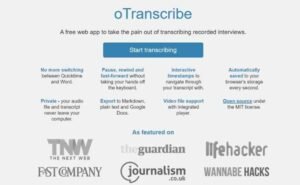AFFILIATE DISCLOSURE
This post may contain affiliate links. An affiliate means Escribr may earn referral fees if you make a purchase through our link without any extra cost to you. It helps to keep this blog afloat. Thanks for your support!
Did you know that by visiting this blog, you are doing good in the world? READ THIS.
Getting started as a freelancer can feel like a tough climb, especially if you’re eyeing roles like writing, web development, programming, or marketing. The common worry is, “How will anyone hire me if my portfolio isn’t bursting with projects?” That’s where building a portfolio with zero experience comes into play.
Here’s the good news: the idea that you need a massive, dazzling portfolio to succeed is a total myth.
What really counts is how you present yourself as an expert and the unique value you bring to the table.
Want to know how to do that? Don’t worry—we’ll dive into those strategies in another post.
Here are some recommendations on how you can build a portfolio, start to establish your expertise, and land your first client.
1. Create Your Own Samples
You can create your own samples to showcase your skills and attract clients.
Potential clients want to see your abilities in action, and creating samples is a straightforward way to demonstrate that.
For instance, if you’re a web designer, you don’t need past projects to prove your talent—just design a few mock websites.
As a transcriber, pick a YouTube video, transcribe it, and voilà, you’ve got a solid sample.
Social Media Managers can create a Facebook or Instagram page filled with valuable posts, turning it into a live demonstration of their expertise.
Even your own website or marketing materials can act as your portfolio.
This approach works especially well for bloggers, social media administrators, and freelance web designers.
The key is to imagine your ideal client and create a hypothetical project tailored to their needs.
Think of it as practice with purpose—it’s all about showing what you can do, even before your first client comes along.
2. Swap Skills with Fellow Freelancers
When you’re just starting out, swapping skills with other freelancers can be a game-changer for building your portfolio. It’s a simple, collaborative way to showcase your expertise while getting something valuable in return.
Here’s how it works: Let’s say you’re a budding writer. You could offer to create engaging content for a graphic designer’s portfolio in exchange for a custom logo for your brand. These projects don’t have to be big or complicated—just meaningful enough to highlight your abilities.
Skill swapping is a win-win. You expand your portfolio with real-world projects, and in return, you get a polished feature for your business, like a fresh logo, a well-crafted About page, or even a redesigned website.
By reaching out to freelancers and solopreneurs in different fields, you’re not just building your portfolio—you’re also expanding your network. Some of these connections might turn into future collaborations or partnerships, opening doors to more opportunities down the line.
So don’t hesitate to approach fellow freelancers who complement your skills. You’ll grow your portfolio while creating valuable relationships for your freelance journey.
3. Work for Family and Friends
Your family and friends can be an excellent starting point for building your freelance portfolio. They’re often the first to support your new career path, and their network might just open doors to your first real projects.
Here’s the deal: whether it’s helping an aunt with her small business website, designing a logo for a friend’s side hustle, or writing a blog post for a cousin’s startup, these opportunities give you practical experience and something to showcase. Even if you’re working for free or a small fee, what matters is creating quality samples that reflect your skills.
The size of the project doesn’t matter. A simple logo, a brief transcription, or a few social media posts can go a long way in demonstrating your abilities. Plus, friends and family can refer you to others, giving you access to a broader pool of potential clients.
These early efforts might feel small now, but each one adds to your portfolio and builds your confidence. And before you know it, you’ll have a solid collection of work to show future clients.
4. Offer Your Services to Local Small Businesses at a Discount
Small businesses in your community can be a goldmine of opportunities when you’re starting out. These companies often need help but may not have the budget for high-priced professionals, making them an ideal stepping stone for a new freelancer like you.
Think of it this way: many small business owners know they need to improve their website, marketing, or operations, but they lack the time, skills, or resources to tackle those tasks. By offering your services at a discounted rate, you’re not only helping them out—you’re also gaining real-world experience and valuable portfolio pieces.
It’s a win-win. You get to flex your skills on actual projects, and once you’ve impressed them with your work, you can ask for testimonials. Positive feedback from local businesses can be a powerful tool for attracting more clients.
Beyond building your portfolio, working with small businesses also lets you test the waters of freelancing. You’ll learn how to handle invoices, create quotes, manage your time, and oversee projects—essential skills for growing your business.
And don’t underestimate the business insights you’ll gain along the way. Each project you take on helps you understand your clients better, fine-tune your process, and get one step closer to becoming the go-to expert in your field.
5. Offer Your Services to Nonprofit Organizations for Free
Nonprofit organizations are always in need of skilled professionals, and they can provide an excellent opportunity to build your portfolio while making a positive impact. Whether you’re a freelance marketer, copywriter, graphic designer, consultant, or social media specialist, there’s a nonprofit out there that could use your expertise.
While many nonprofits do pay for professional services, they often rely on volunteers who generously contribute their time and skills. By offering your services for free, even for a short period, you can gain valuable experience and add impressive samples to your portfolio.
Nonprofits are typically very appreciative of any help they receive, and your contributions will reflect positively on you. Potential clients and collaborators will see your work and recognize your commitment to giving back—a quality that can set you apart in a competitive market.
Plus, working with nonprofits can introduce you to a network of like-minded professionals, leading to future opportunities. It’s a chance to do good while showcasing your abilities, making it a worthwhile step in your freelance journey.
6. Write Small Case Studies
Case studies are an excellent way to show off your skills and tell the story of how you solve problems or help others achieve their goals. The best part? They don’t have to come from paying clients. You can base them on work you’ve done for a friend, family member, coworker, or even a past employer.
For example, if you helped someone set up a Facebook page for their business or designed a logo for a friend’s startup, that’s a case study waiting to happen. Focus on the problem you addressed, the steps you took, and the results you achieved. Even seemingly small projects can become compelling stories when framed well.
Here’s a creative twist: write hypothetical case studies. If you’re just starting out or want to target a specific niche, create a detailed scenario about how you’d help a dream client solve a problem. This allows you to showcase your expertise without needing a long work history or an existing portfolio.
Hypothetical case studies let you attract the type of clients you want by demonstrating your ability to tackle challenges in their industry. Whether real or hypothetical, case studies help you build credibility and position yourself as a solution-oriented professional.
Here’s an idea.
Check out the website zerotomarketing.com.
The owner of the website has taken an innovative and proactive approach to building their portfolio while simultaneously growing their personal brand.
By focusing on startups, they create short, actionable case studies detailing specific strategies they’d use to help those businesses grow. Here’s why this method works so well:
- Demonstrating Expertise: Each case study showcases their understanding of marketing, problem-solving skills, and creativity. It’s a powerful way to establish credibility without needing prior client work.
- Attracting an Audience: By consistently producing valuable content, they’ve built a subscriber base of over 10,000 people with an impressive open rate of more than 50%. This proves that their insights are engaging and resonate with their audience.
- Leveraging Recognition: Winning “Product of the Day” on Product Hunt further validates their work and adds to their credibility. It shows they’re not only knowledgeable but also capable of creating buzzworthy content.
- Building Relationships: By analyzing startups, they’re positioning themselves as someone who understands the unique challenges of growing businesses. This could attract interest from those startups, leading to potential collaborations or freelance opportunities.
This method is an excellent example of turning knowledge into actionable content, building a reputation, and showcasing value—all without needing a traditional client portfolio. It’s a strategy that freelancers in many fields could adapt to their own niches.
Adapt the Case Study Strategy to Build Your Portfolio
Freelancers can take inspiration from this strategy by creating case studies tailored to their niche. Here’s how to make it work:
- Choose a Focus Area: Select businesses, industries, or niches you’re passionate about or want to attract as clients. These could be startups, local businesses, nonprofits, or even fictional scenarios.
- Solve Real or Hypothetical Problems: Analyze their challenges and detail step-by-step strategies to address them. For example, a freelance writer might outline a content marketing plan for a small business, or a graphic designer could draft branding ideas for a startup.
- Share Valuable Insights: Highlight actionable tips that readers can apply to their own projects. This not only demonstrates your expertise but also builds trust with potential clients.
- Build an Audience: Turn your case studies into content for a blog, LinkedIn posts, or an email newsletter. Consistency and value will attract readers, showcasing your skills to a growing audience.
- Leverage Social Proof: Promote your work on social media platforms. Gaining recognition or engaging with your audience can build credibility and draw more eyes to your portfolio.
- Encourage Engagement: Add a call-to-action, such as inviting readers to contact you for a custom solution or subscribe for more insights. This keeps the momentum going and helps you convert leads into clients.
By creating and sharing case studies, freelancers can showcase their skills, build authority in their field, and attract their ideal clients—all without waiting for traditional client projects. It’s a proactive and impactful way to grow your portfolio and reputation simultaneously.










